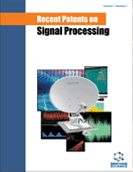Abstract
Router buffer overflow and random bit errors have always been a problem in the Internet. The growth in multimedia applications in mobile extensions of the Internet has increased the threat from error bursts, random errors, and packet erasures that are a manifestation of wireless channels. Source-coded error resilience has come to prominence in the H.264/AVC codec standard, and this paper reviews such innovations surrounding this codec. Some innovations are new variants of an existing technique such as data-partitioning and some are entirely new such as the powerful dispersed-mode flexible macroblock ordering. Other techniques, such as reversible variable length coding, were not transferred to H.264/AVC from earlier codecs and, hence, innovations are proposed to still provide robust entropy coding. Other variants such as adaptive intra-refresh are still being experimented with. When error resilience or other protection methods fail to present an adequate video frame then error concealment can be brought to bear. This paper reviews error concealment which is important to commercial companies as they are able to distinguish their codec from others. The paper considers spatial, temporal and hybrid error concealment methods. Though this paper contains over one hundred references and relevant patents have been discussed, it can only provide a slice through this rich field.
Keywords: Data-partitioning, error concealment, error resilience, FMO, intra-refresh, multiple reference frames, picture slices, redundant pictures, robust entropy coding, RVLC, video services, Transmission Control Protocol, Context-Adaptive Binary Arithmetic Coding, video coding system
 1
1

